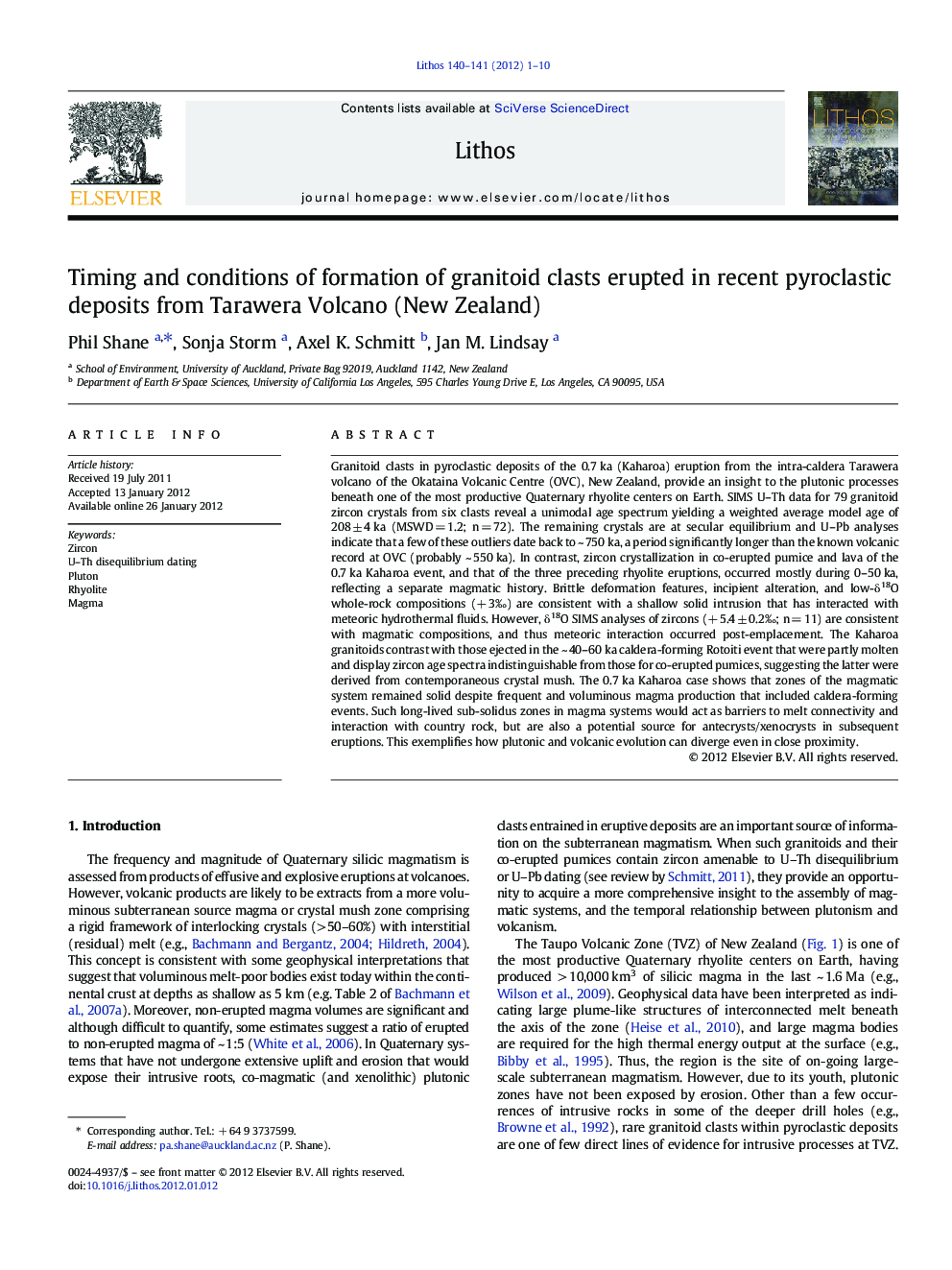| کد مقاله | کد نشریه | سال انتشار | مقاله انگلیسی | نسخه تمام متن |
|---|---|---|---|---|
| 4716613 | 1638709 | 2012 | 10 صفحه PDF | دانلود رایگان |

Granitoid clasts in pyroclastic deposits of the 0.7 ka (Kaharoa) eruption from the intra-caldera Tarawera volcano of the Okataina Volcanic Centre (OVC), New Zealand, provide an insight to the plutonic processes beneath one of the most productive Quaternary rhyolite centers on Earth. SIMS U–Th data for 79 granitoid zircon crystals from six clasts reveal a unimodal age spectrum yielding a weighted average model age of 208 ± 4 ka (MSWD = 1.2; n = 72). The remaining crystals are at secular equilibrium and U–Pb analyses indicate that a few of these outliers date back to ~ 750 ka, a period significantly longer than the known volcanic record at OVC (probably ~ 550 ka). In contrast, zircon crystallization in co-erupted pumice and lava of the 0.7 ka Kaharoa event, and that of the three preceding rhyolite eruptions, occurred mostly during 0–50 ka, reflecting a separate magmatic history. Brittle deformation features, incipient alteration, and low-δ18O whole-rock compositions (+ 3‰) are consistent with a shallow solid intrusion that has interacted with meteoric hydrothermal fluids. However, δ18O SIMS analyses of zircons (+ 5.4 ± 0.2‰; n = 11) are consistent with magmatic compositions, and thus meteoric interaction occurred post-emplacement. The Kaharoa granitoids contrast with those ejected in the ~ 40–60 ka caldera-forming Rotoiti event that were partly molten and display zircon age spectra indistinguishable from those for co-erupted pumices, suggesting the latter were derived from contemporaneous crystal mush. The 0.7 ka Kaharoa case shows that zones of the magmatic system remained solid despite frequent and voluminous magma production that included caldera-forming events. Such long-lived sub-solidus zones in magma systems would act as barriers to melt connectivity and interaction with country rock, but are also a potential source for antecrysts/xenocrysts in subsequent eruptions. This exemplifies how plutonic and volcanic evolution can diverge even in close proximity.
► Granitoid clasts erupted at 0.7 ka provide a rare insight to the plutonism in the Taupo Volcanic Zone.
► U-series data on granitoid zircon crystals yield a weighted average model age of 208 ± 4 ka.
► Zircon crystallization in co-erupted pumice and lava occurred mostly during 0–50 ka.
► Granitoids form a solidified carapace that minimized interaction between magma and wall-rocks.
Journal: Lithos - Volumes 140–141, May 2012, Pages 1–10